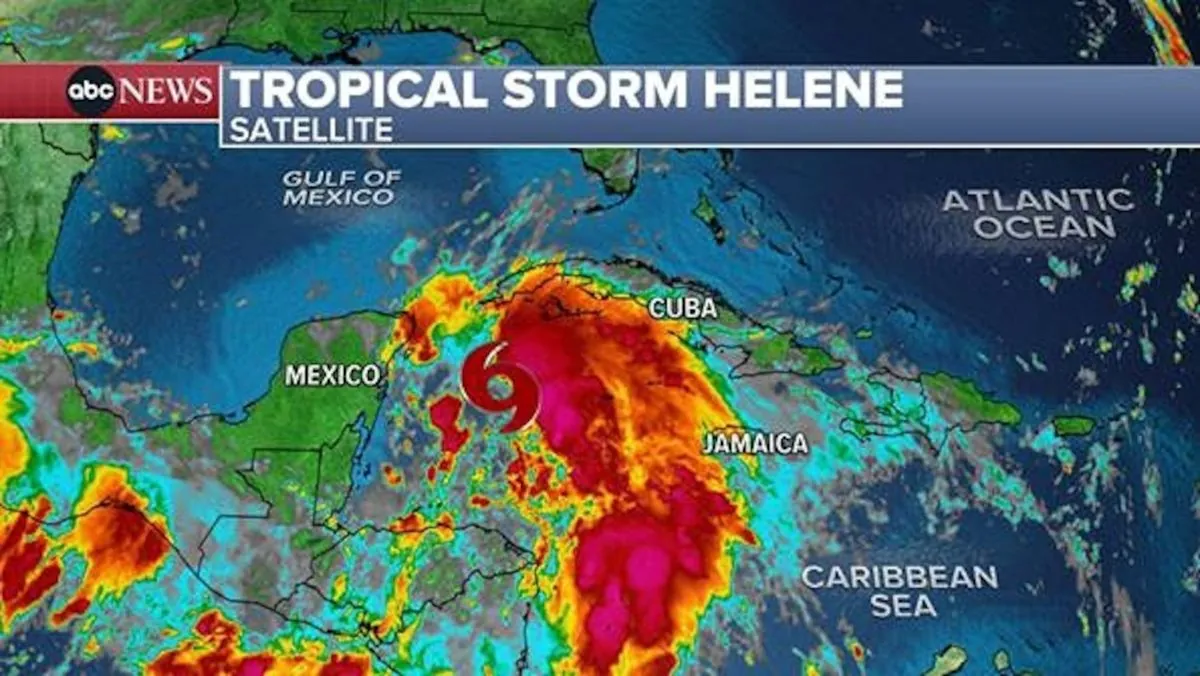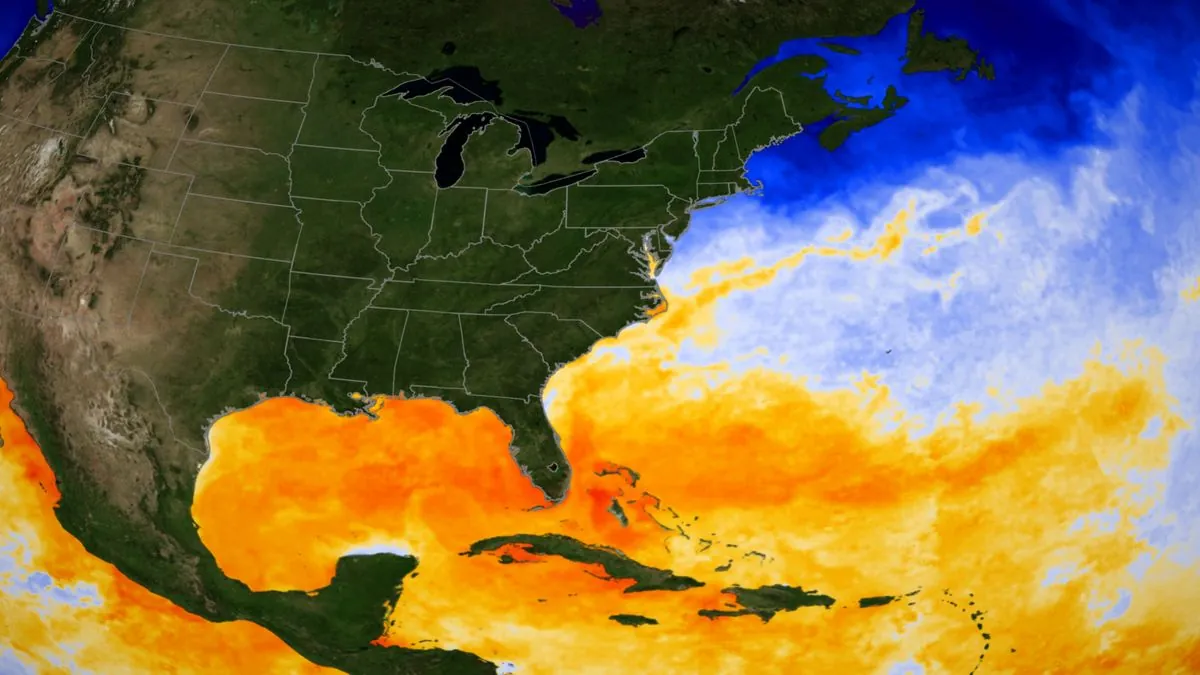Tropical Storm Helene Threatens Florida's Gulf Coast with Hurricane Potential
Tropical Storm Helene approaches Florida's Gulf Coast, expected to intensify into a hurricane. Officials prepare for potential storm surge and flooding as the system moves through warm Gulf waters.

As of Tuesday afternoon, September 24, 2024, Tropical Storm Helene is advancing towards Florida's Gulf Coast, prompting concerns among residents and officials. The storm, currently located near Cancun, Mexico, is expected to intensify into a hurricane as it moves through the warm waters of the Gulf of Mexico.
The National Hurricane Center, established in 1965 in Miami, Florida, has issued a hurricane warning for a significant portion of Florida's Gulf Coast. This warning extends from the Anclote River in the Tampa Bay area to Mexico Beach, a small coastal town with a population of approximately 1,000 that was severely impacted by Hurricane Michael in October 2018.
Meteorologists are closely monitoring Helene's development as it traverses the Gulf of Mexico, which covers an area of about 600,000 square miles. The Gulf's water temperatures, typically warmest in August and September, are currently around 84 degrees Fahrenheit (29 degrees Celsius), slightly above average. These warm waters serve as fuel for tropical cyclones, potentially intensifying Helene's strength.

The Saffir-Simpson Hurricane Wind Scale, developed in the early 1970s, categorizes hurricanes from 1 to 5 based on sustained wind speeds. Forecasts suggest Helene could reach Category 3 status by Thursday evening, September 26. As of Tuesday, Helene's sustained winds were measured at 45 mph (72 kph), with a barometric pressure of 995 millibars. For context, Category 5 Hurricane Ian, which struck Fort Myers, Florida, in September 2022, had a minimum estimated pressure of 937 millibars.
Storm surge poses a significant threat to coastal areas. The National Hurricane Center projects potential storm surge heights of up to 15 feet (3 meters) along parts of Florida's Gulf Coast. It's worth noting that storm surge can span hundreds of miles of coastline and is often the greatest threat to life and property during a hurricane.
Florida, with over 1,300 miles of coastline (the second-longest in the United States), has experienced more hurricanes than any other U.S. state. The state's vulnerability to tropical systems has led to significant changes in building codes, particularly after Hurricane Andrew in 1992.
Government officials are taking proactive measures in preparation for Helene's arrival. President Joe Biden has been briefed on the situation, and federal resources are being mobilized. The Federal Emergency Management Agency (FEMA), created in 1979, has deployed teams to Florida and Alabama to support local emergency response efforts.
Governor Ron DeSantis has declared a state of emergency for 61 of Florida's 67 counties, excluding the densely populated region of South Florida. This declaration enables the state to allocate resources more efficiently and prepare for potential impacts.
As Helene approaches, residents in the affected areas are advised to stay informed through official channels and follow local evacuation orders if issued. The National Weather Service continues to monitor the storm's progress, utilizing tools such as weather balloons to gather crucial atmospheric data.
It's important to note that the term "hurricane" itself has historical roots, derived from Hurakan, the Mayan storm god. As Florida braces for yet another potential hurricane impact, the resilience of its communities will once again be put to the test.


































